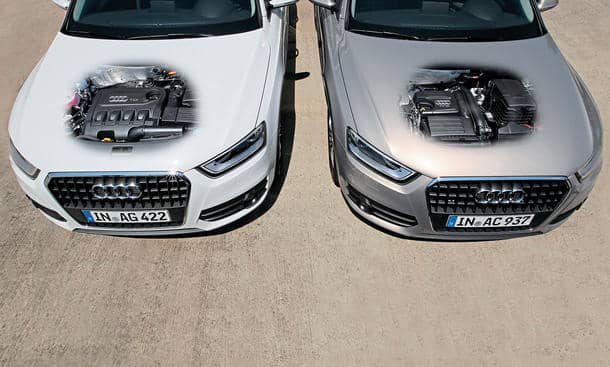Car manufacturers have been transitioning towards the TDI and TFSI (also known as TSI) engine, with the latest introduction being the Audi A4 coming with roaring 3.0 TDI and 2.0 TFSI engines, making their cars more powerful than ever before. But what do these abbreviations stand for?
TDI refers to Turbocharged Diesel Injection, whereas TFSI means Turbocharged Fuel Stratified Injection.
A turbocharger, or colloquially turbo, uses a turbine-driven forced induction device to draw in more air into the combustion chamber and increases an internal combustion engine’s efficiency and power output.
So TDI being a turbo diesel engine, lies in the 90 to 150hp range. These engines have significantly more torque, something in the 150 to 240 lb/ft range.
In comparison, the TFSI is a turbo gasoline engine racking up about 180 hp, but a similar torque.
Other than the difference of fuel type, both are quite similar engines with turbo injection and usually 4-cylinders. The turbo diesel engine will have a low-RPM torque and better fuel economy, and in comparison, the petrol will have a higher redline and greater peak power. Watch the video below to see an animation on the performance of the two engines.


